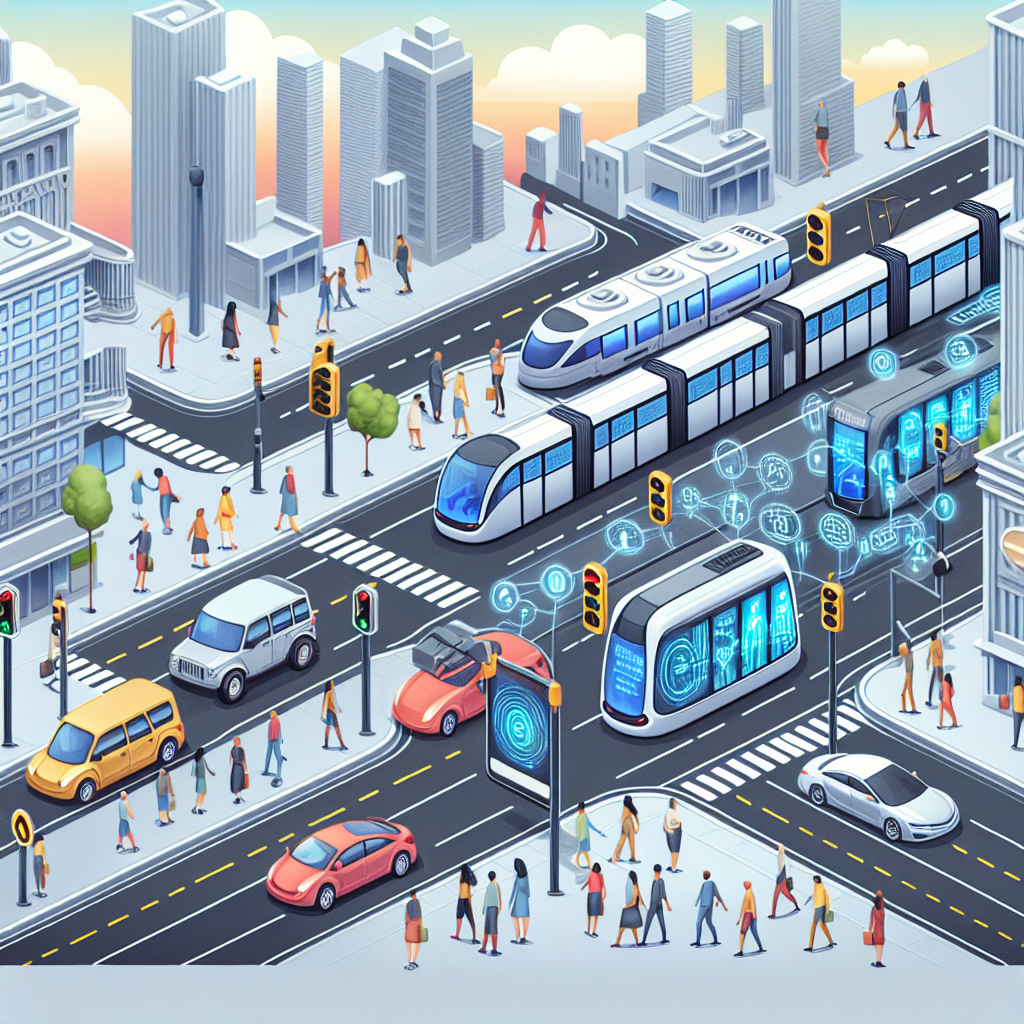Artificial Intelligence (AI) has been revolutionizing various industries, including public transportation. With the advancement of technology, AI has the potential to improve mobility and accessibility for all individuals, making public transportation more efficient, reliable, and convenient. In this article, we will explore how AI is transforming public transportation and the benefits it brings to commuters.
AI in Public Transportation
AI technology is being integrated into public transportation systems worldwide to enhance their performance and efficiency. One of the key areas where AI is making a significant impact is in predicting demand and optimizing routes. By analyzing data such as traffic patterns, passenger volume, and weather conditions, AI algorithms can help transportation authorities predict demand accurately and adjust routes in real-time to meet the needs of commuters.
For example, AI-powered transportation systems can use data from sensors and cameras to monitor traffic flow and congestion levels. This information can then be used to optimize bus and train schedules, reroute vehicles when necessary, and provide real-time updates to commuters. This not only reduces waiting times and travel delays but also improves the overall efficiency of public transportation services.
Another way AI is improving public transportation is through the use of predictive maintenance. By analyzing data from sensors installed on vehicles, AI algorithms can detect potential issues before they occur, allowing maintenance crews to address them proactively. This helps prevent breakdowns and service disruptions, ensuring that public transportation services run smoothly and reliably.
Furthermore, AI-powered ticketing systems are simplifying the process of purchasing and validating tickets for commuters. By using facial recognition technology or mobile apps, passengers can quickly and securely access public transportation services without the need for physical tickets or cards. This not only saves time for commuters but also reduces the risk of fraud and improves the overall security of the system.
Benefits of AI in Public Transportation
The integration of AI technology in public transportation offers numerous benefits for both commuters and transportation authorities. Some of the key advantages include:
1. Improved Efficiency: AI algorithms can optimize routes, schedules, and maintenance procedures, resulting in more efficient and reliable transportation services. This can help reduce travel times, waiting times, and service disruptions, making public transportation more attractive to commuters.
2. Enhanced Safety: AI-powered systems can monitor traffic conditions, detect potential hazards, and alert drivers of potential dangers. This helps improve the safety of public transportation services and reduces the risk of accidents and injuries.
3. Increased Accessibility: AI technology can help make public transportation more accessible to individuals with disabilities or special needs. By providing real-time updates, route recommendations, and assistance services, AI-powered systems can help ensure that all commuters can use public transportation services comfortably and independently.
4. Reduced Environmental Impact: By optimizing routes and schedules, AI algorithms can help reduce fuel consumption and emissions, making public transportation more environmentally friendly. This can help contribute to efforts to combat climate change and improve air quality in urban areas.
5. Cost Savings: AI technology can help transportation authorities reduce operating costs by optimizing resource allocation, minimizing maintenance expenses, and improving overall efficiency. This can lead to cost savings that can be reinvested in improving public transportation services for commuters.
FAQs
1. How is AI used in predicting demand for public transportation?
AI algorithms analyze data such as traffic patterns, passenger volume, and weather conditions to predict demand accurately. This information is then used to optimize routes and schedules in real-time to meet the needs of commuters.
2. How does AI improve the safety of public transportation services?
AI-powered systems can monitor traffic conditions, detect potential hazards, and alert drivers of dangers to improve the safety of public transportation services. This helps reduce the risk of accidents and injuries for commuters.
3. How can AI help make public transportation more accessible to individuals with disabilities?
AI technology can provide real-time updates, route recommendations, and assistance services to help individuals with disabilities or special needs use public transportation services comfortably and independently. This can help improve accessibility for all commuters.
4. What are the environmental benefits of using AI in public transportation?
By optimizing routes and schedules, AI algorithms can help reduce fuel consumption and emissions, making public transportation more environmentally friendly. This can help contribute to efforts to combat climate change and improve air quality in urban areas.
5. How can AI help transportation authorities reduce operating costs?
AI technology can help transportation authorities reduce operating costs by optimizing resource allocation, minimizing maintenance expenses, and improving overall efficiency. This can lead to cost savings that can be reinvested in improving public transportation services for commuters.
In conclusion, AI has the potential to transform public transportation by improving mobility and accessibility for all individuals. By optimizing routes, schedules, and maintenance procedures, AI-powered systems can make public transportation more efficient, reliable, and convenient for commuters. With the continued advancement of technology, the integration of AI in public transportation is expected to bring even more benefits in the future.

